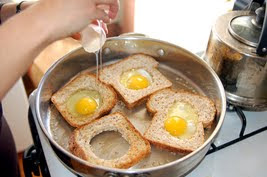What do you imagine if I say to you that I like Bloody Mary? Would you call the police? Or a psychologist? Before doing it, please hang up the phone and let me tell you that it is one of the most famous and consumed cocktails in the world.
A Bloody Mary is a popular cocktail containing vodka, tomato juice, Worcestershire sauce, Peri-Peri Sauce, Tabasco sauce, beef consomme, celery, olive, black pepper, cayenne pepper, lemon juice and salt among other ingredients. As you can imagine, it is one of "the world's most complex cocktails”.
The Bloody Mary's origin is unclear. Fernand Petiot claimed to have invented the drink in 1921 while working in Harry's New York Bar, in Paris. However, the first printed document dates from 1939 and affirms that George Jessel created the drink .
The name "Bloody Mary" has 3 different theories about its origins:
The first one, as the bartender Ferdinand Petiot, "one of the boys suggested we call the drink 'Bloody Mary' because it reminded him of the Bucket of Blood Club in Chicago, and a girl there named Mary."
 The second one is associated with the historical figure Queen Mary I of England. She was queen regnant of England and Ireland from July 1553 until her death on 17 November 1558. She was the only surviving child born Henry VIII and his first wife Catherine of Aragon. Her younger half-brother, Edward VI, succeeded Henry in 1547. On his death, their cousin Lady Jane Grey was, at first, proclaimed queen. Mary assembled a force in East Anglia, and successfully deposed Jane, who was ultimately beheaded. In 1554, Mary married Philip of Spain, and as a result became queen consort of Habsburg Spain on his accession in 1556. Mary is remembered for her restoration of Roman Catholicism. During her five year reign, she had over 280 religious dissenters burned at the stake in the Marian Persecutions. Her Protestant opponents gave her the sobriquet of "Bloody Mary".
The second one is associated with the historical figure Queen Mary I of England. She was queen regnant of England and Ireland from July 1553 until her death on 17 November 1558. She was the only surviving child born Henry VIII and his first wife Catherine of Aragon. Her younger half-brother, Edward VI, succeeded Henry in 1547. On his death, their cousin Lady Jane Grey was, at first, proclaimed queen. Mary assembled a force in East Anglia, and successfully deposed Jane, who was ultimately beheaded. In 1554, Mary married Philip of Spain, and as a result became queen consort of Habsburg Spain on his accession in 1556. Mary is remembered for her restoration of Roman Catholicism. During her five year reign, she had over 280 religious dissenters burned at the stake in the Marian Persecutions. Her Protestant opponents gave her the sobriquet of "Bloody Mary". The third theory deals with a popular tale. This story talks about an evil spirit who will scratch your eyes out when it is summoned by chanting "Bloody Mary" into a mirror in a darkened room lit only by a candle. She was supposed to be a woman named Mary Worth, who was horribly disfigured in a car crash or a witch who was burned at the stake and has returned for revenge.
In conclusion, as my previous entry in the blog, the origins of the name are not clear but now I suppose you will not be confused if you hear about a person that loves the Bloody Mary. Thanks for reading it and don´t be scared at the middle.
Postscript: Please, don´t try the chanting of Bloody Mary in front of a mirror at home. This entry accepts no responsibility.












































